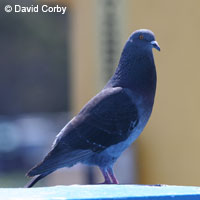Homing pigeons smell their way home
New research from a team with partners in Italy and New Zealand has discovered important new evidence explaining why the homing pigeon can find its way home - it follows its nose. The ability of homing pigeons to find their way home from unfamiliar places - sometimes hundreds of kilometres away - with uncanny accuracy and speed has puzzled and delighted pigeon fanciers the world over for centuries. This skill has made the pigeon a favourite of spies - the carrier pigeon is a very reliable and almost invisible way of carrying confidential information away. Recent research proposed that there is a special pigeon sensitivity for the Earth's magnetic field, giving the pigeons an invisible lifeline to their home. While the research was compelling, this new research suggests an even more compelling method - smell. In the interests of scholarship, lead researcher Anna Gagliardo, from the University of Pisa, invited the researcher who made the link between pigeons and magnetism - New Zealander Mark Wild from the University of Auckland - to test her theory. He accepted. 'This is important because it is the first time that magnetic sensing and smell have been tested side by side,' Dr Gagliardo told the Observer newspaper. To settle the question, the pair decided to use inexperienced birds - pigeons that had not been trained. In one set they cut the olfactory nerve, to disable their sense of smell, and in the other, cut the trigeminal nerve - identified by Dr Wild as responsible for their sense for magnetism. They then launched half the birds from 50 km north, and the other half 50 km south of Pisa, and waited to see what happened. The results were compelling - all but one of the magnetism-impaired birds arrived back within 24 hours, while only four - one-sixth of the total - of the smell-impaired birds made it back at all, and arrived back more than a day after release. The rest were lost. With the magnetism-impaired birds winning by considerably more than a nose, the team now believes that pigeons build a 'smell-map' of their surroundings. How the birds manage to arrive home over vast distances does remain something of a mystery, but smell seems to play a part.
Countries
Italy, New Zealand

